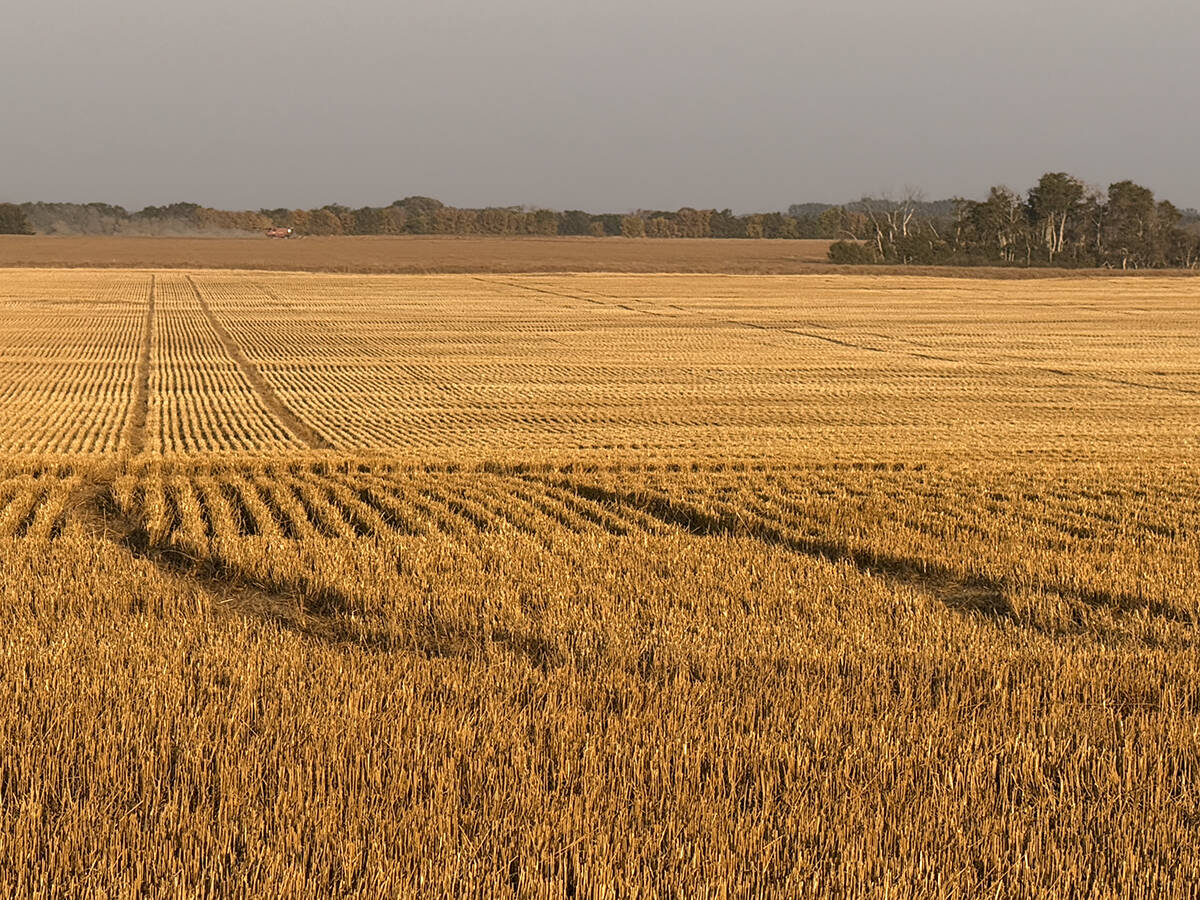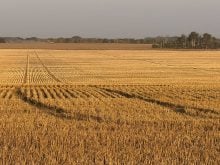Her head drooped. Her lower lip hung. She only nickered softly when her nosy neighbours came over.
“It was so rewarding,” said Leanna Rousell, describing the signs of relaxation she observed during her third massage session with Shasta, a lame, nine-year-old mare whose eventual enjoyment of the treatment allowed Rousell to restore her gait.
Rousell is a veterinary technologist who works full-time at a Perdue, Sask., feedlot, but whose “true passion is horses.”
So passionate, in fact, that she took a two-week Equine Sports Massage course in Seattle, Washington, in the summer of 2000.
Read Also

Final crop reports show strong yields, quality
Crops yielded above average across the Prairies this year, and quality is generally average to above-average.
She said this alternative treatment complements veterinary treatment rather than replacing it.
According to Rousell, the benefits are many. She said massage reduces muscle spasms, increases flexibility and range of motion, and flushes out the lactic acid that accumulates in muscles after exercise and causes stiffness. It also loosens tight muscles and stimulates weak ones, allowing muscle groups to work together.
“Horses are like any athlete,” she said.
“Massage is good for them and they like it. But at first they wonder what’s going on. And of course, if you hit a tender area, some horses will get quite vocal. They’ll even bite.
“I approach all horses very slowly, because every horse is different and every one has a different tolerance for pain. So, while I’m massaging, I’m also listening and watching.
“Twitching ears, for example, or a switching tail, tells me I’m getting close to a sensitive spot.”
Two weeks of hands-on training and intensive anatomy and physiology classes taught Rousell more about how horses work.
“Now I don’t just see a horse, I see muscles,” she said.
Her therapeutic massage takes one to one-and-a-half hours. She begins by getting to know the horse, and evaluating its gait and conformation for clues about what’s causing the soreness. Using her body weight rather than physical strength, she starts the massage at the top of the neck behind the ears, continues down the back to the hind quarters and ends with the legs.
Tendons are a common problems in horses, which Rousell treats with stretches, but not until she has warmed the muscles with massage or walking.
“Massage can’t cause damage, but stretching can.”
She then leaves the owners with instructions for continuing the massage.
A therapeutic massage may be given as often as once a week or occasionally, such as before or after the riding or working season.
Injury-recovery massage is given for about an hour or an hour and a half, while a pre- or post-event massage takes 15 to 20 minutes.
Although she hasn’t practised it much, Rousell is also trained in aromatherapy for horses, which can be used to sedate or stimulate. It can be a useful addition to massage if working with a nervous horse, she said.
“Equine sport massage is very popular in the United States, and is now taking off around Calgary, where most stables have equine massage therapists,” she said.
“Although there is an increasing number of therapists in Saskatchewan, and veterinarians are aware of our services – one even referred a bull with a bad back to me – we still have to spread the word.”














